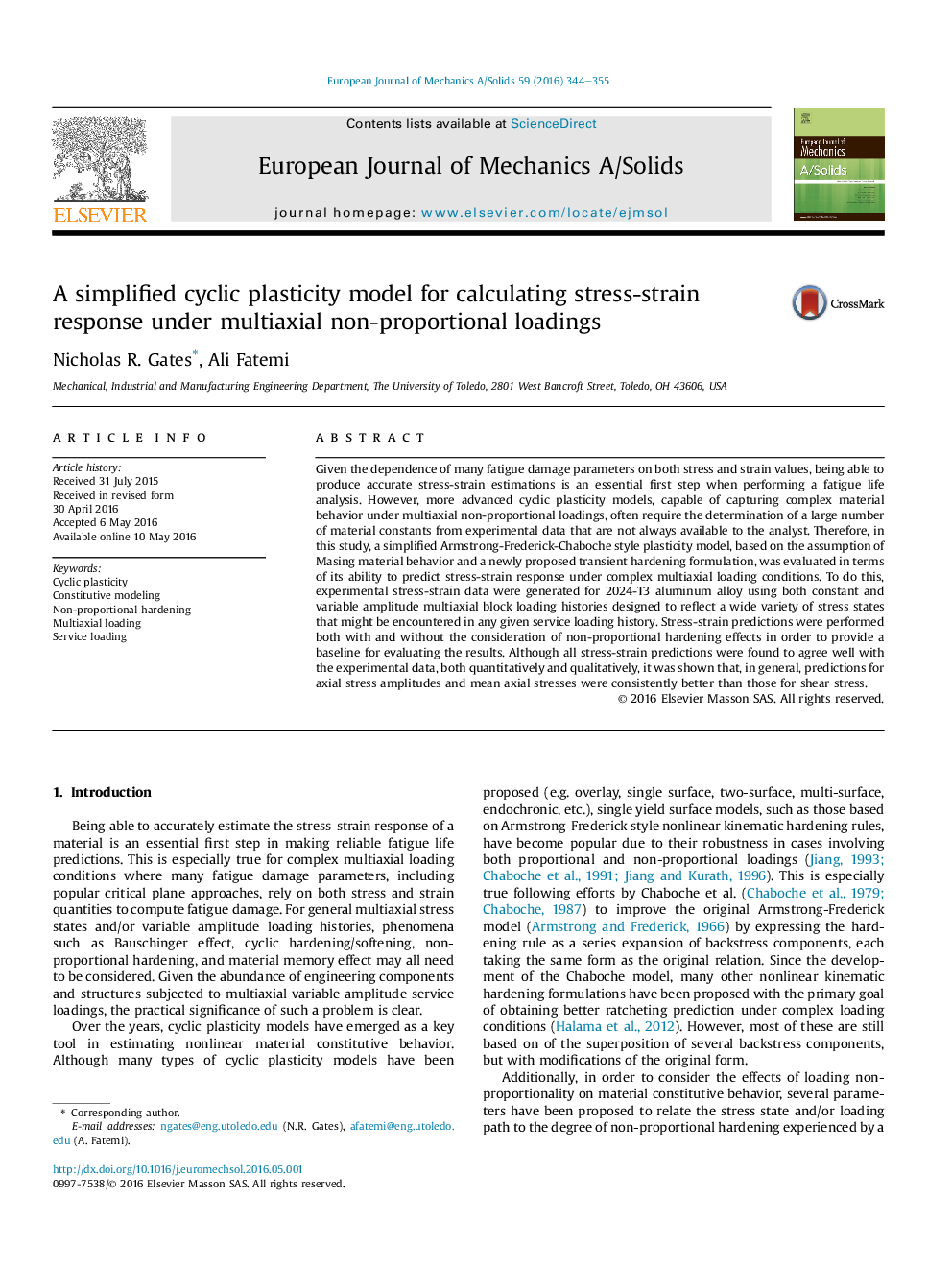| کد مقاله | کد نشریه | سال انتشار | مقاله انگلیسی | نسخه تمام متن |
|---|---|---|---|---|
| 774621 | 1463188 | 2016 | 12 صفحه PDF | دانلود رایگان |
• Material deformation behavior was measured under complex loading histories.
• A simplified plasticity model was used to predict measured stress-strain response.
• Model was simplified through Masing assumption and revised transient formulation.
• Predictions agreed well with experimental stress paths and stress amplitudes.
• Axial stress predictions were found to be more accurate than those for shear.
Given the dependence of many fatigue damage parameters on both stress and strain values, being able to produce accurate stress-strain estimations is an essential first step when performing a fatigue life analysis. However, more advanced cyclic plasticity models, capable of capturing complex material behavior under multiaxial non-proportional loadings, often require the determination of a large number of material constants from experimental data that are not always available to the analyst. Therefore, in this study, a simplified Armstrong-Frederick-Chaboche style plasticity model, based on the assumption of Masing material behavior and a newly proposed transient hardening formulation, was evaluated in terms of its ability to predict stress-strain response under complex multiaxial loading conditions. To do this, experimental stress-strain data were generated for 2024-T3 aluminum alloy using both constant and variable amplitude multiaxial block loading histories designed to reflect a wide variety of stress states that might be encountered in any given service loading history. Stress-strain predictions were performed both with and without the consideration of non-proportional hardening effects in order to provide a baseline for evaluating the results. Although all stress-strain predictions were found to agree well with the experimental data, both quantitatively and qualitatively, it was shown that, in general, predictions for axial stress amplitudes and mean axial stresses were consistently better than those for shear stress.
Journal: European Journal of Mechanics - A/Solids - Volume 59, September–October 2016, Pages 344–355
